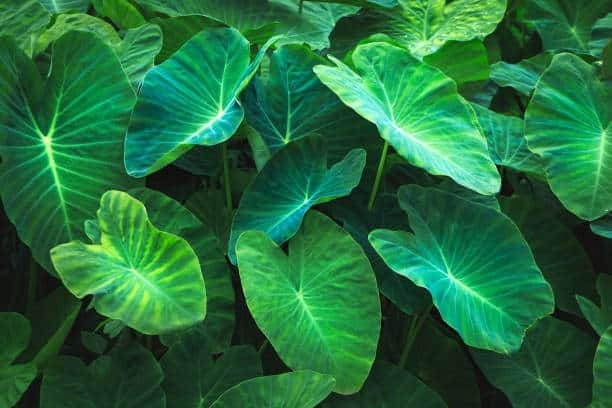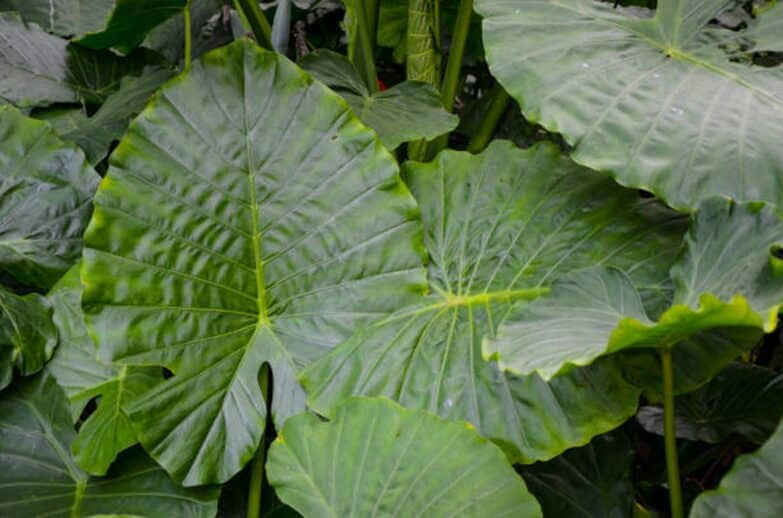Alocasia Odora, commonly known as Giant Elephant Ear or Night-Scented Lily, is a tropical plant native to Southeast Asia that’s rapidly gaining popularity among gardening enthusiasts. With its large, lush leaves and distinctive look, it can transform your home or garden into a tropical paradise. This guide will walk you through everything you need to know about Alocasia Odora, from its history and characteristics to its care requirements and potential challenges.
The Alocasia Odora Plant: An Overview
History and Origins
Alocasia Odora is a part of the Araceae family, which includes over 3,000 species, such as the well-known Philodendron and Monstera plants. This tropical gem is native to Southeast Asia, specifically countries like India, Malaysia, and the Philippines. Due to its exotic beauty, the plant has spread to other parts of the world, including the United States and various European countries, as a sought-after ornamental plant.
Characteristics
The Alocasia Odora is known for its colossal, heart-shaped leaves that can grow up to 3 feet long and 2 feet wide. The leaves are deep green with a glossy surface and have a thick, succulent texture. The plant’s an impressive size and unique appearance makes it a striking addition to any indoor or outdoor garden.
During the flowering season, Alocasia Odora produces a white to light green, calla lily-like inflorescence known as a spathe, which surrounds a central spadix. The flowers emit a sweet, pleasant scent, primarily during the evening and night, hence the name Night-Scented Lily.
Cultivating Alocasia Odora: Location and Planting
Choosing the Right Location
Alocasia Odora plants thrive in warm, humid environments with filtered sunlight. If you’re growing your Alocasia Odora outdoors, select a location that offers dappled shade or a morning sun with afternoon shade. Direct sunlight may scorch the leaves, while deep shade can hinder the plant’s growth.
For indoor cultivation, place your Alocasia Odora near a bright window that receives indirect sunlight. Ensure the room maintains a temperature between 65°F and 85°F, as these plants are not frost-tolerant and may suffer damage if exposed to temperatures below 50°F.
Planting Your Alocasia Odora
When planting Alocasia Odora, consider using a well-draining soil mix, as the plant prefers consistently moist but not waterlogged soil. A blend of potting mix, perlite, and peat moss in equal parts is ideal. If planting in a pot, choose a container with drainage holes to prevent water stagnation.
Plant the tuber or root ball about 2-3 inches below the soil surface, ensuring that the growing point faces upwards. Space multiple Alocasia Odora plants at least 3-4 feet apart to give their large leaves ample room to expand.
Alocasia Odora Care: Water, Light, and Nutrients
Watering Your Alocasia Odora
Maintaining proper moisture levels is crucial for the health of your Alocasia Odora. The plant prefers consistently moist soil but is sensitive to over-watering, which can lead to root rot. Water your plant when the top 1-2 inches of soil become dry. Be sure to empty the saucer beneath the pot after watering to prevent standing water.
During colder months or periods of lower light, reduce the frequency of watering, as the plant’s growth slows and its water requirements diminish.
Lighting Requirements
As previously mentioned, Alocasia Odora prefers bright, indirect sunlight. If grown indoors, place your plant near a window that receives filtered light or use a sheer curtain to protect it from direct sun exposure. Outdoors, choose a location with dappled shade or morning sunlight and afternoon shade.
If you notice that the leaves of your Alocasia Odora are losing their vibrant color or becoming pale, it may be a sign that the plant is receiving insufficient light. On the other hand, brown or scorched leaf edges may indicate that the plant is exposed to too much direct sunlight.
Fertilizing Your Alocasia Odora
Feeding your Alocasia Odora is essential for its growth and overall health. Use a balanced liquid fertilizer diluted to half strength every 3-4 weeks during the growing season (spring and summer). In fall and winter, reduce the frequency of fertilizing to once every 6-8 weeks, as the plant’s growth slows down.
Avoid over-fertilizing your Alocasia Odora, as this may cause nutrient burn, leading to discolored or damaged leaves.
Alocasia Odora Maintenance: Pruning and Propagation

Pruning Your Alocasia Odora
Regular pruning helps maintain the health and appearance of your Alocasia Odora. Remove any yellowing, damaged, or dead leaves by cutting them at their base using clean, sharp pruning shears. This will encourage new growth and prevent the plant from expending energy on unhealthy foliage.
Propagating Your Alocasia Odora
Alocasia Odora can be propagated through division, which is best done during the spring or early summer. To propagate your plant, follow these steps:
- Gently remove the parent plant from its pot or carefully dig it up from the ground, taking care not to damage the roots.
- Examine the root ball or tuber and identify areas with multiple growth points.
- Using a clean, sharp knife or pruning shears, divide the root ball or tuber into sections, ensuring each section has at least one growth point.
- Plant the divided sections into individual pots or new locations in the ground, following the planting guidelines outlined earlier in this article.
- Maintain proper care, including watering and fertilizing, to encourage healthy growth in the new plants.
Common Alocasia Odora Problems and Solutions
Pests and Diseases
Alocasia Odora plants may occasionally encounter issues with pests, such as spider mites, mealybugs, and aphids. To treat infestations, you can use insecticidal soap or neem oil, following the application instructions provided by the product.
Root rot is a common issue with Alocasia Odora plants, often caused by over-watering or poor drainage. Ensure that your plant is planted in well-draining soil and water only when the top 1-2 inches of soil are dry.
Leaf Drooping and Yellowing
If your Alocasia Odora’s leaves are drooping or turning yellow, it may be due to several factors, including over-watering, under-watering, or inadequate light. Adjust your care routine accordingly, and remember to monitor the plant’s moisture levels and light exposure.
Conclusion
Alocasia Odora is a stunning, tropical plant that adds an exotic touch to any space, whether indoors or outdoors. By following the guidelines outlined in this article, you can cultivate your very own Alocasia Odora and transform your home or garden into a lush, tropical paradise. Remember to provide proper care, including appropriate watering, lighting, and fertilizing, and regularly check for pests and diseases to ensure your plant remains healthy and vibrant.

